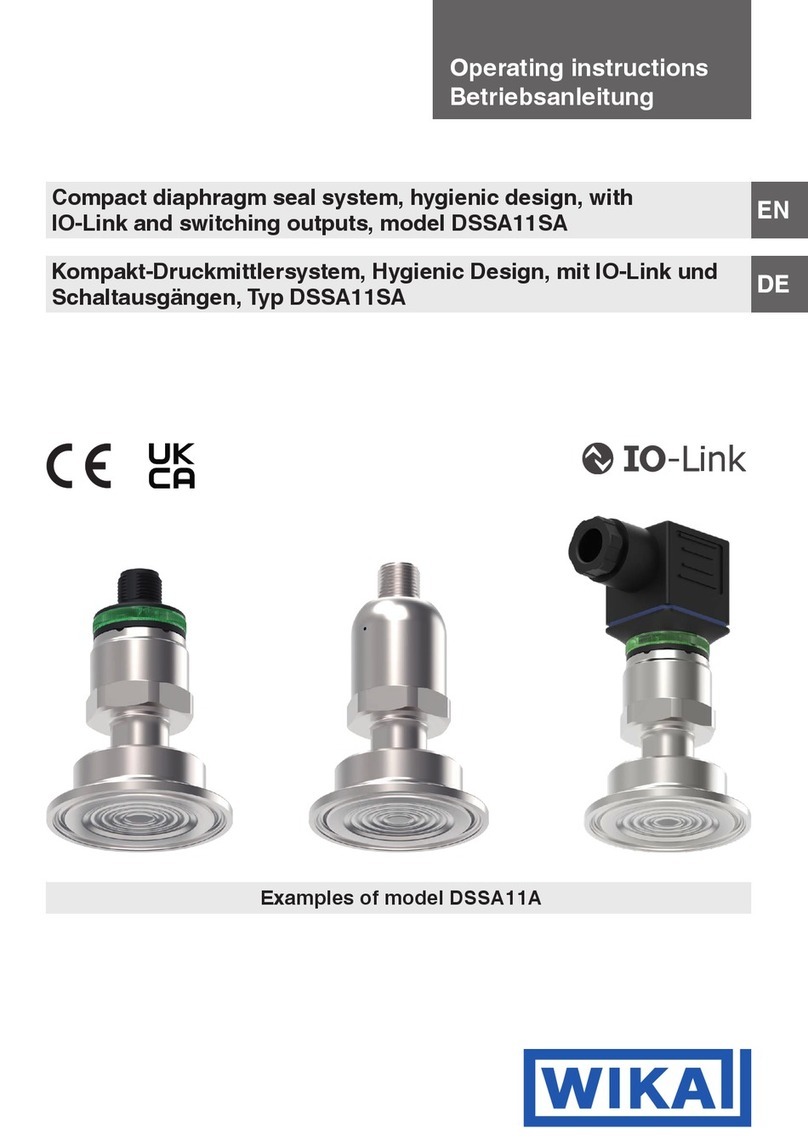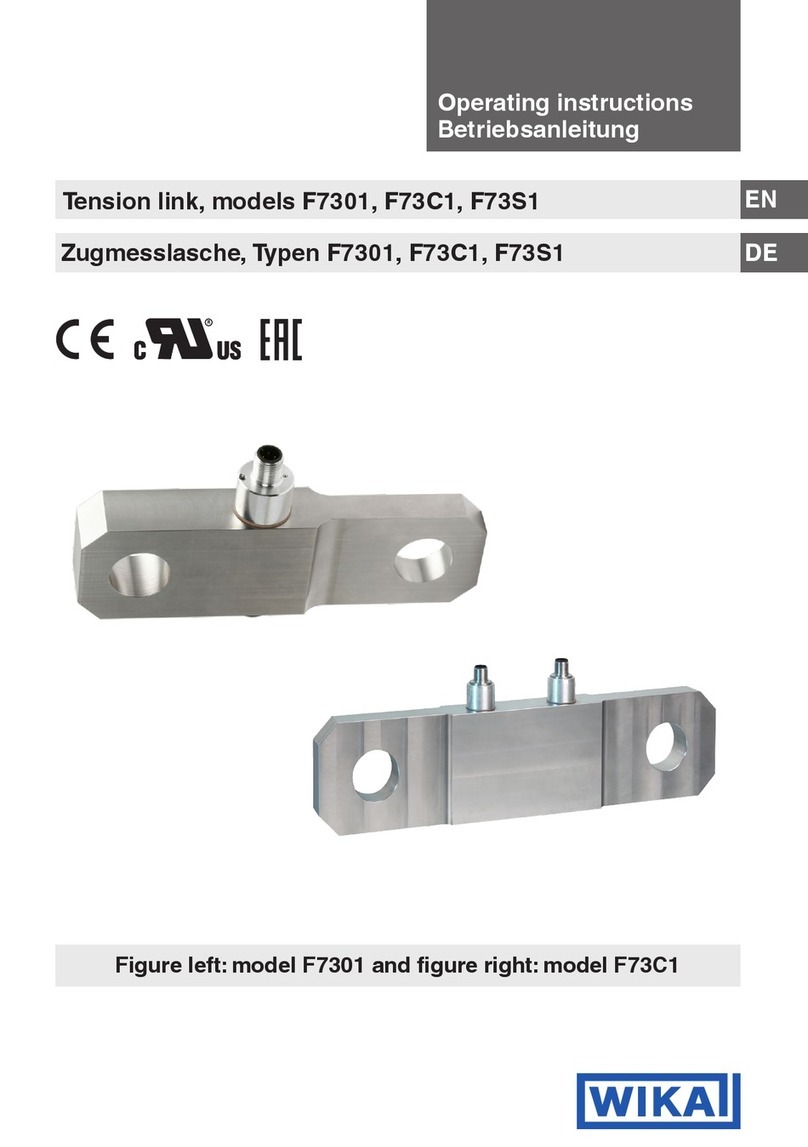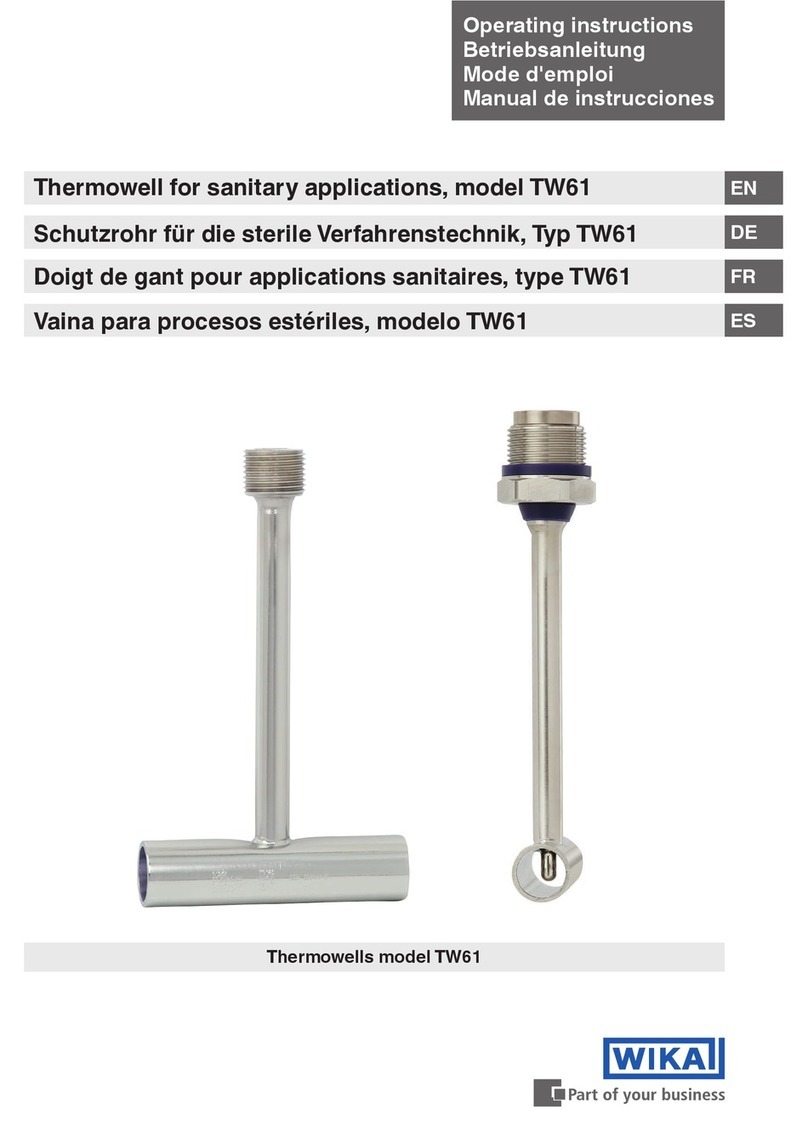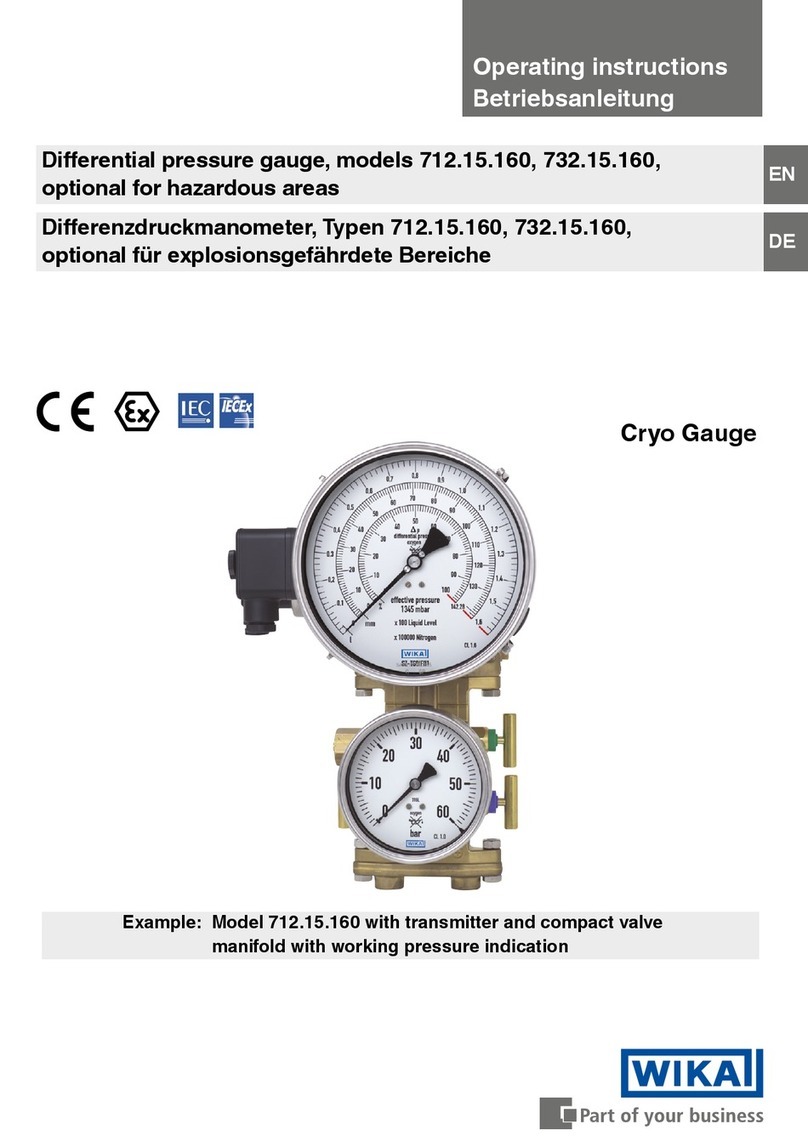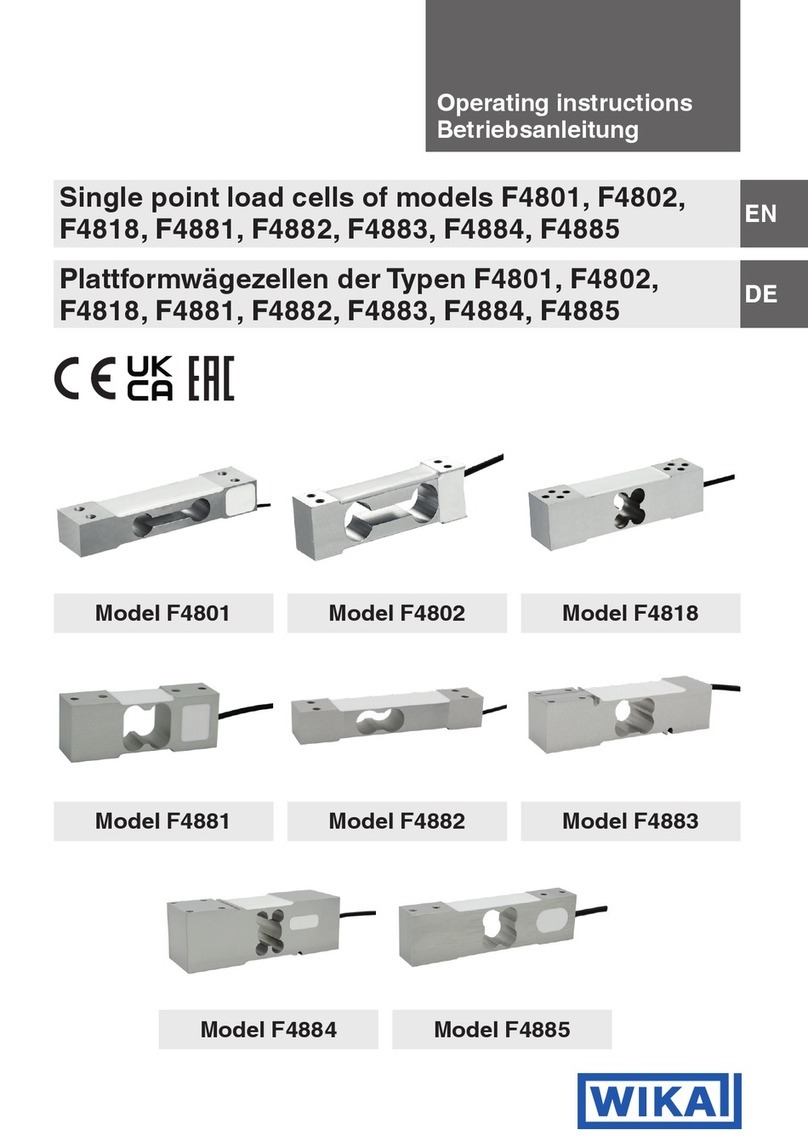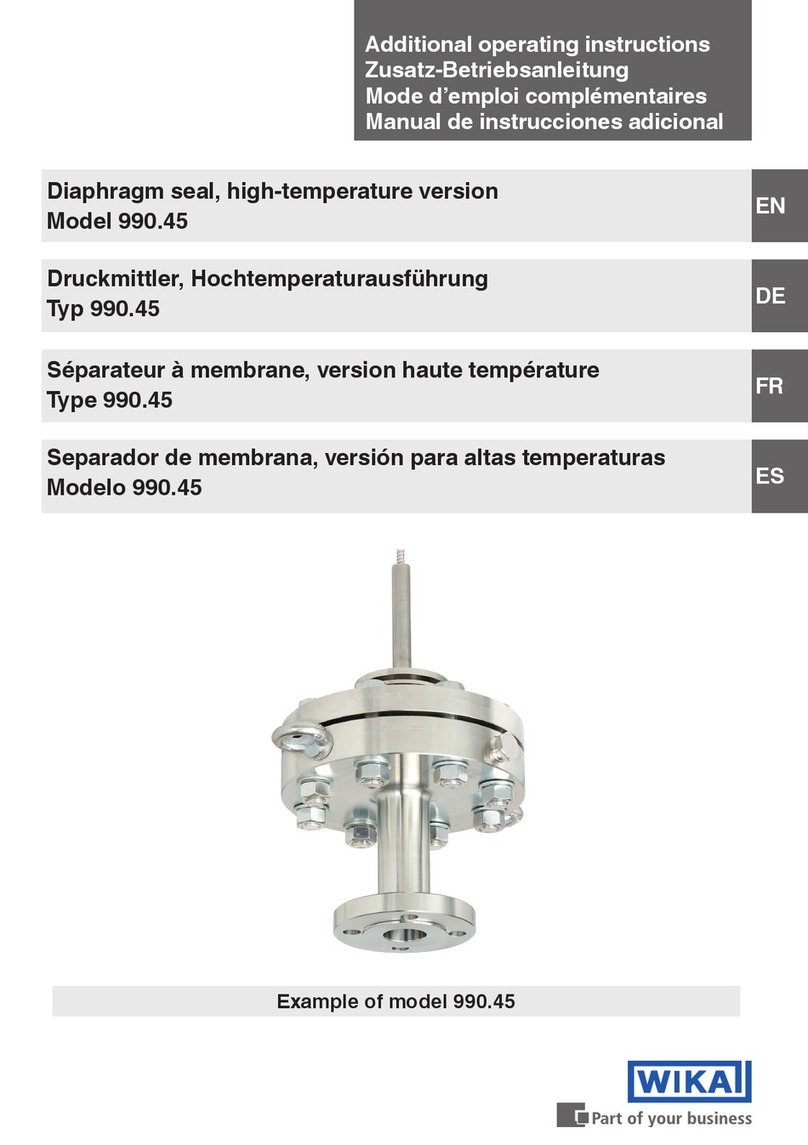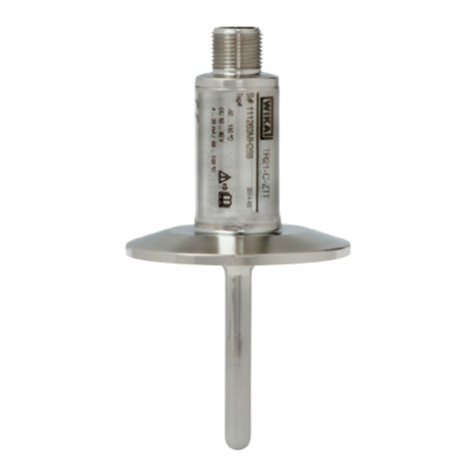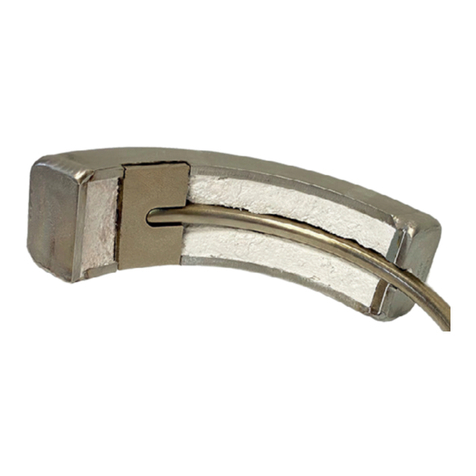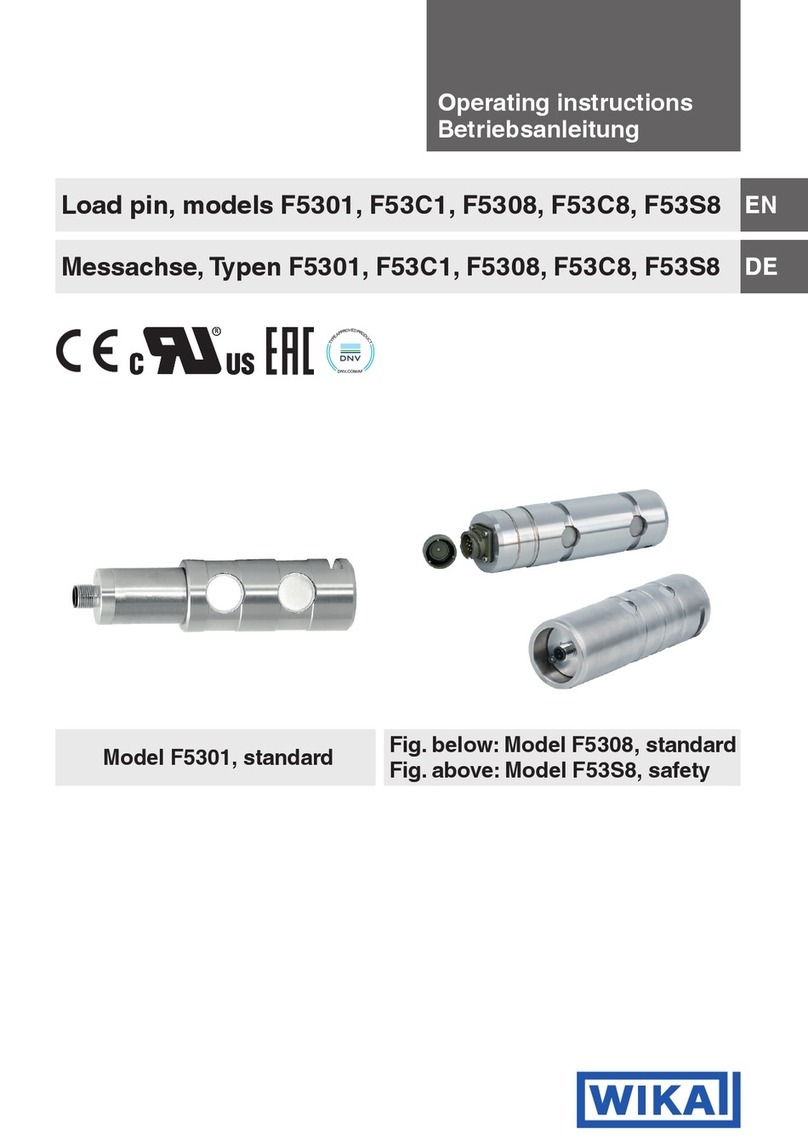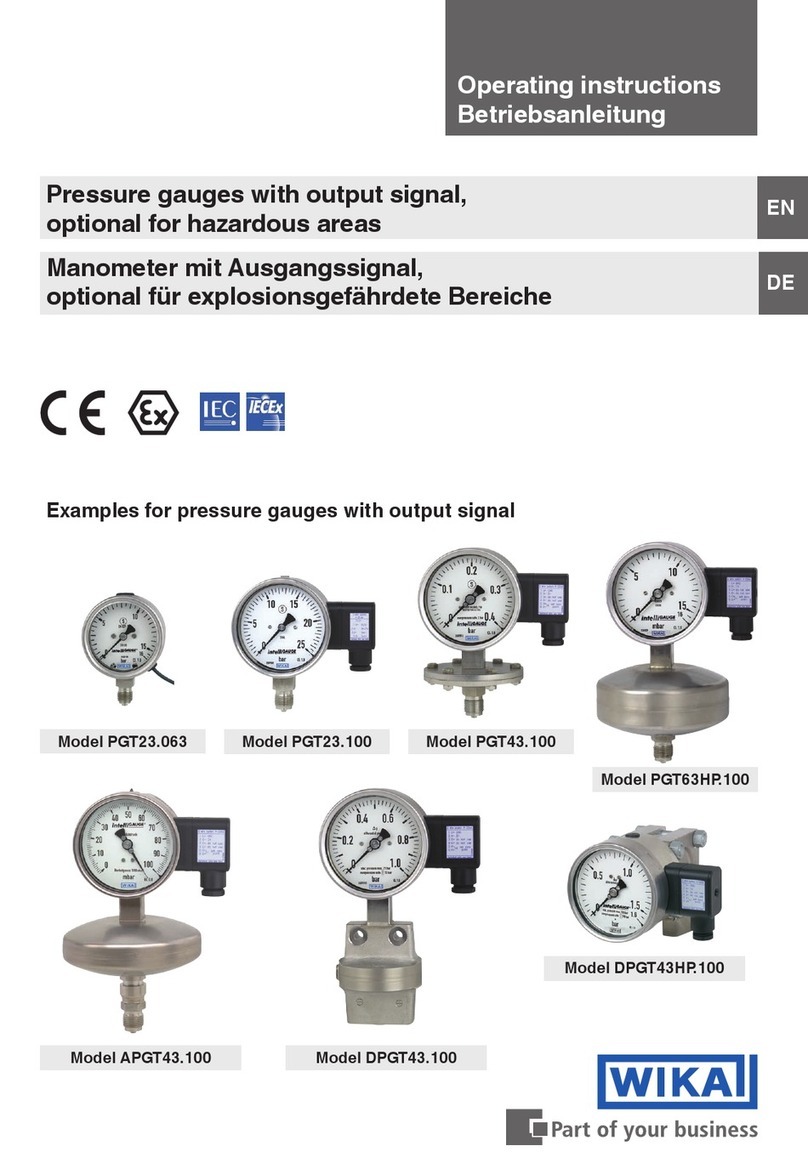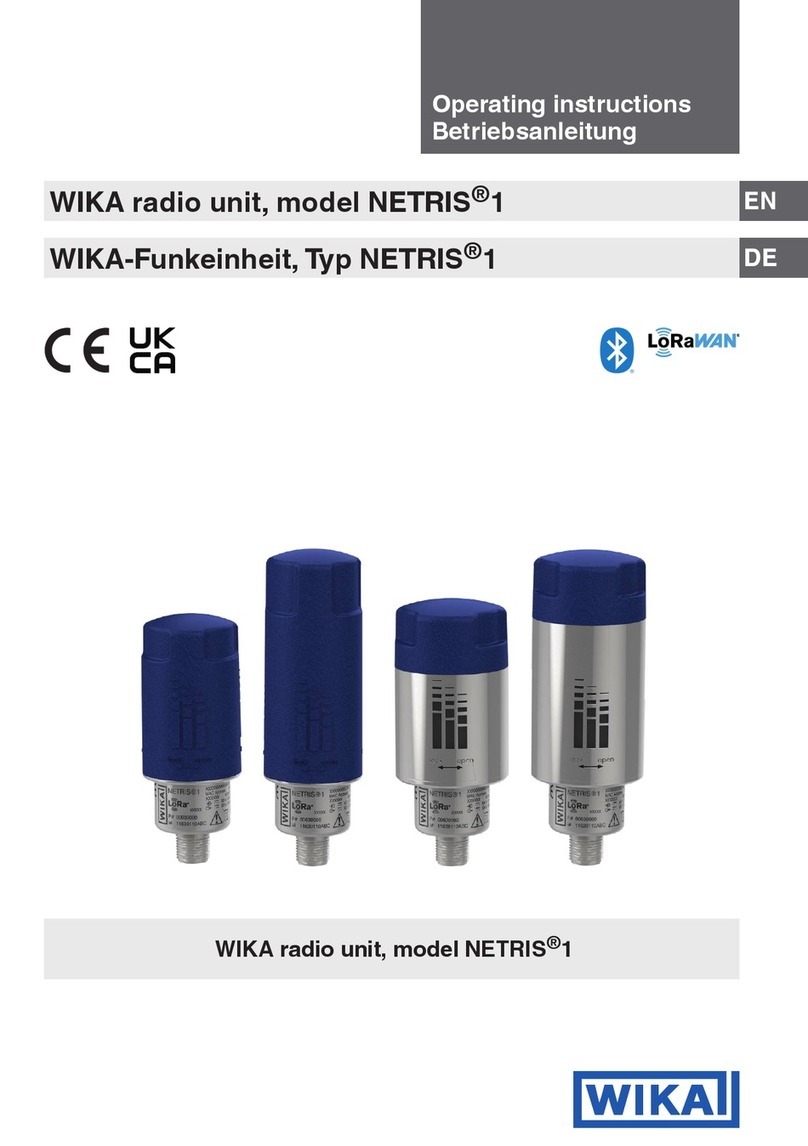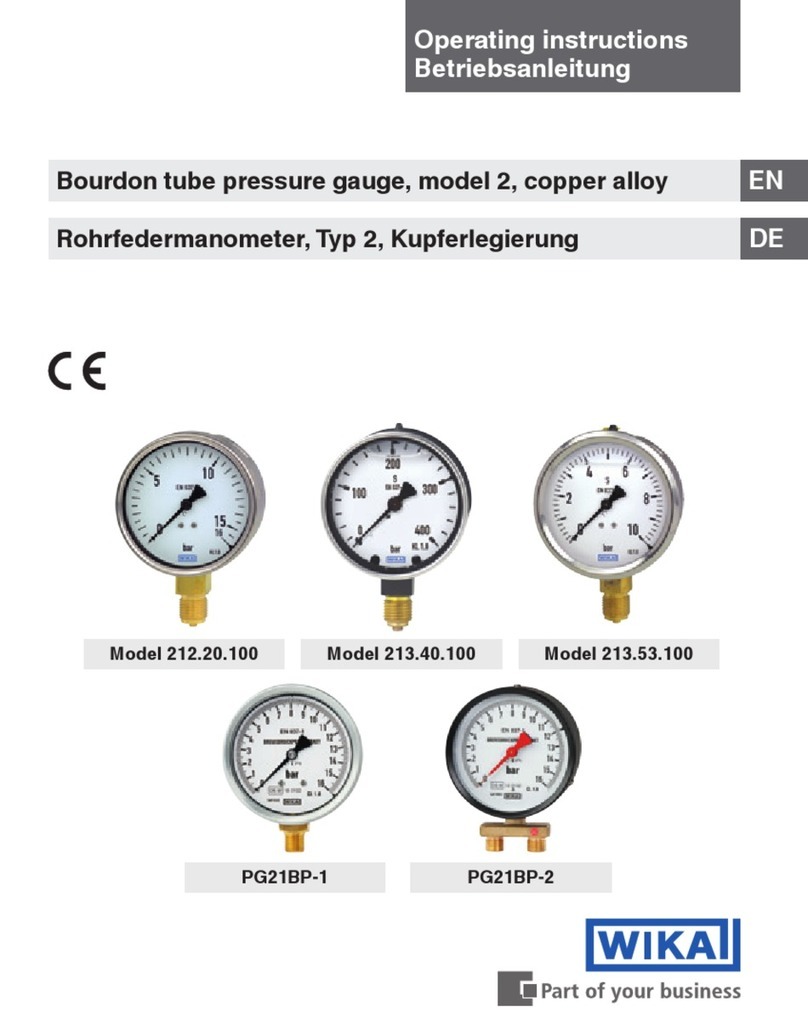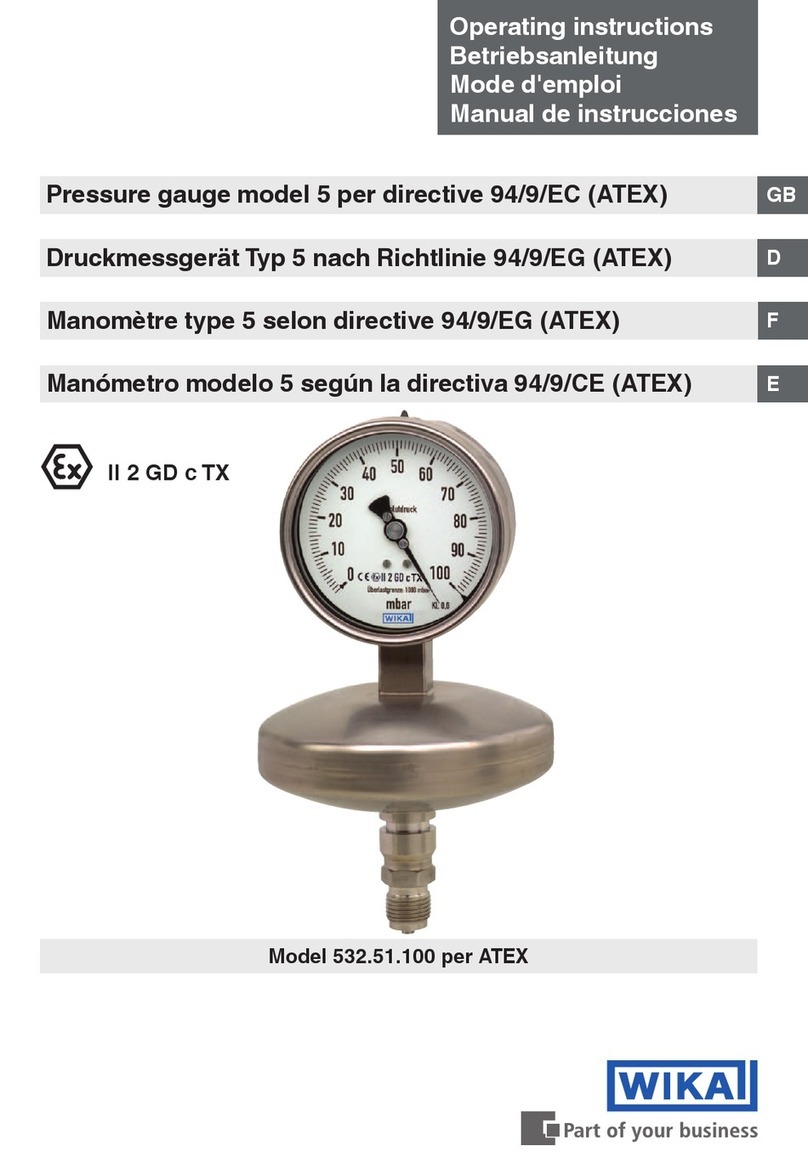
10
11265191.12 05/2021 EN/DE/FR/ES
Dierential pressure gauge models 712.15.160, 732.15.160, optional for hazardous areas
EN
Avoid exposure to the following factors:
■Direct sunlight or proximity to hot objects
■Mechanical vibration, mechanical shock (putting it down hard)
■Soot, vapour, dust and corrosive gases
■Hazardous environments, ammable atmospheres
Store the instrument in its original packaging in a location that fulls the conditions listed
above.
4. Commissioning, operation
Personnel: Skilled personnel
Before installation, commissioning and operation, ensure that the appropriate instrument has
been selected in terms of scale range, design and specic measuring conditions.
DANGER!
Danger to life from explosion!
Through working in ammable atmospheres, there is a risk of explosion which can
cause death.
▶Only carry out set-up work in non-hazardous environments!
WARNING!
Physical injuries and damage to property and the environment caused by
hazardous media
Upon contact with hazardous media (e.g. oxygen, acetylene, ammable or toxic
substances), harmful media (e.g. corrosive, toxic, carcinogenic, radioactive), there is a
danger of physical injuries and damage to property and the environment.
Should a failure occur, aggressive media with extremely high temperature and
under high pressure may be present at the instrument.
▶For these media, in addition to all standard regulations, the appropriate existing
codes or regulations must also be followed.
▶Wear the requisite protective equipment.
WARNING!
Physical injuries and damage to property and the environment caused by
media escaping under high pressure
With the pressurisation of the instrument, as a result of poor sealing of the process
connection, media under high pressure can escape.
Due to the high energy of the media that can escape in the event of a failure, the
possibility of physical injuries and damage to property exists.
▶The sealing of the process connection must be carried out expertly and checked
for leak tightness.
3. Transport, packaging and storage / 4. Commissioning, operation
